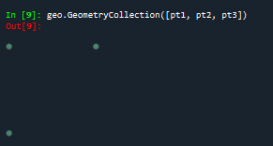python 自定义封装带颜色的logging模块
自己在搭建python接口自动化框架 分享一些内容过程中想自己封装一个logger方法 根据logging进行二次封装 代码如下
|
1
2
3
4
5
6
7
8
9
10
11
12
13
14
15
16
17
18
19
20
21
22
23
24
25
26
27
28
29
30
31
32
33
34
35
36
37
38
39
40
41
42
43
44
45
46
47
48
49
50
51
52
53
54
55
56
57
58
59
60
61
62
63
|
import loggingimport osimport timeimport colorlogfrom logging.handlers import RotatingFileHandler# 创建文件目录cur_path = os.path.dirname(os.path.realpath(__file__)) # log_path是存放日志的路径log_path = os.path.join(os.path.dirname(cur_path), 'logs')if not os.path.exists(log_path): os.mkdir(log_path) # 如果不存在这个logs文件夹,就自动创建一个# 修改log保存位置timestamp = time.strftime("%Y-%m-%d", time.localtime())logfile_name = '%s.log' % timestamplogfile_path = os.path.join(log_path, logfile_name)# 定义不同日志等级颜色log_colors_config = { 'DEBUG': 'bold_cyan', 'INFO': 'bold_green', 'WARNING': 'bold_yellow', 'ERROR': 'bold_red', 'CRITICAL': 'red',}class Logger(logging.Logger): def __init__(self, name, level='DEBUG', file=None, encoding='utf-8'): super().__init__(name) self.encoding = encoding self.file = file self.level = level # 针对所需要的日志信息 手动调整颜色 formatter = colorlog.ColoredFormatter( '%(log_color)s%(levelname)1.1s %(asctime)s %(reset)s| %(message_log_color)s%(levelname)-8s %(reset)s| %(' 'log_color)s[%(filename)s%(reset)s:%(log_color)s%(module)s%(reset)s:%(log_color)s%(funcName)s%(' 'reset)s:%(log_color)s%(''lineno)d] %(reset)s- %(white)s%(message)s', reset=True, log_colors=log_colors_config, secondary_log_colors={ 'message': { 'DEBUG': 'blue', 'INFO': 'blue', 'WARNING': 'blue', 'ERROR': 'red', 'CRITICAL': 'bold_red' } }, style='%' ) # 日志输出格式 # 创建一个FileHandler,用于写到本地 rotatingFileHandler = logging.handlers.RotatingFileHandler(filename=logfile_path, maxBytes=1024 * 1024 * 50, backupCount=5) rotatingFileHandler.setFormatter(formatter) rotatingFileHandler.setLevel(logging.DEBUG) self.addHandler(rotatingFileHandler) # 创建一个StreamHandler,用于输出到控制台 console = colorlog.StreamHandler() console.setLevel(logging.DEBUG) console.setFormatter(formatter) self.addHandler(console) self.setLevel(logging.DEBUG)logger = Logger(name=logfile_path, file=logfile_path) |
使用时我们只需要引入封装好的类就行 直观美丽大方~
|
1
2
3
4
5
6
7
8
9
10
11
12
13
14
15
16
17
18
19
20
21
22
23
24
25
26
27
28
29
30
31
32
33
34
35
36
37
38
39
|
# 引入封装好的logger模块from common.logger_handler import loggerdef physical_strength(self, abnormal): """兑换体力异常通用方法""" if self.attrs.__contains__('costType'): attrs_Type = { "costType": abnormal, "count": self.attrs["count"] } response_Type = r().response(self.send_uid, self.code, self.event, attrs_Type) # 使用时直接调用logger.info()就行 logger.info(f"physical_strength_{abnormal},response_Type:{response_Type}") assert response_Type["code"] != 0 time.sleep(2) attrs_count = { "costType": self.attrs["costType"], "count": abnormal } response_count = r().response(self.send_uid, self.code, self.event, attrs_count) logger.info(f"physical_strength_{abnormal},response_count:{response_count}") assert response_count["code"] != 0 time.sleep(2) attrs_all = { "costType": abnormal, "count": abnormal } response_all = r().response(self.send_uid, self.code, self.event, attrs_all) logger.info(f"physical_strength_{abnormal},response_all:{response_all}") assert response_all["code"] != 0 time.sleep(2) else: attrs_count = { "count": abnormal } response_count = r().response(self.send_uid, self.code, self.event, attrs_count) logger.info(f"physical_strength_{abnormal},response_count:{response_count}") assert response_count["code"] != 0 time.sleep(2) |
效果:按照 日期/时间/日志等级/文件名称/类/方法名称/代码行数展示(这里可以自己手动调整formatter参数 如果感觉展示太长的话)
%(levelno)s: 打印日志级别的数值
%(levelname)s: 打印日志级别名称
%(pathname)s: 打印当前执行程序的路径,其实就是sys.argv[0]
%(filename)s: 打印当前执行程序名
%(funcName)s: 打印日志的当前函数
%(lineno)d: 打印日志的当前行号
%(asctime)s: 打印日志的时间
%(thread)d: 打印线程ID
%(threadName)s: 打印线程名称
%(process)d: 打印进程ID
%(message)s: 打印日志信息

避坑:不要用这种方式去调用日志等级方法 会出现日志打印定位路径错误 只能定位在log封装类当前方法下
|
1
2
3
4
5
6
7
8
9
10
11
12
|
def debug(self, message): self.__console('debug', message)def info(self, message): self.__console('info', message)def warning(self, message): self.__console('warning', message)def error(self, message): self.__console('error', message) |
到此这篇关于python自定义封装带颜色的logging模块的文章就介绍到这了,更多相关python logging模块内容请搜索服务器之家以前的文章或继续浏览下面的相关文章希望大家以后多多支持服务器之家!
原文链接:https://blog.csdn.net/weixin_44861659/article/details/122951087













